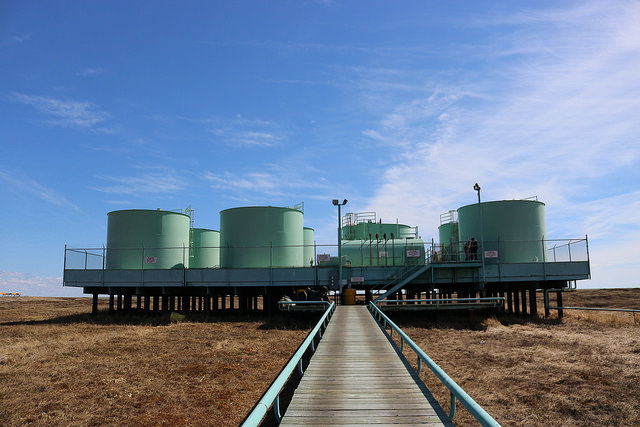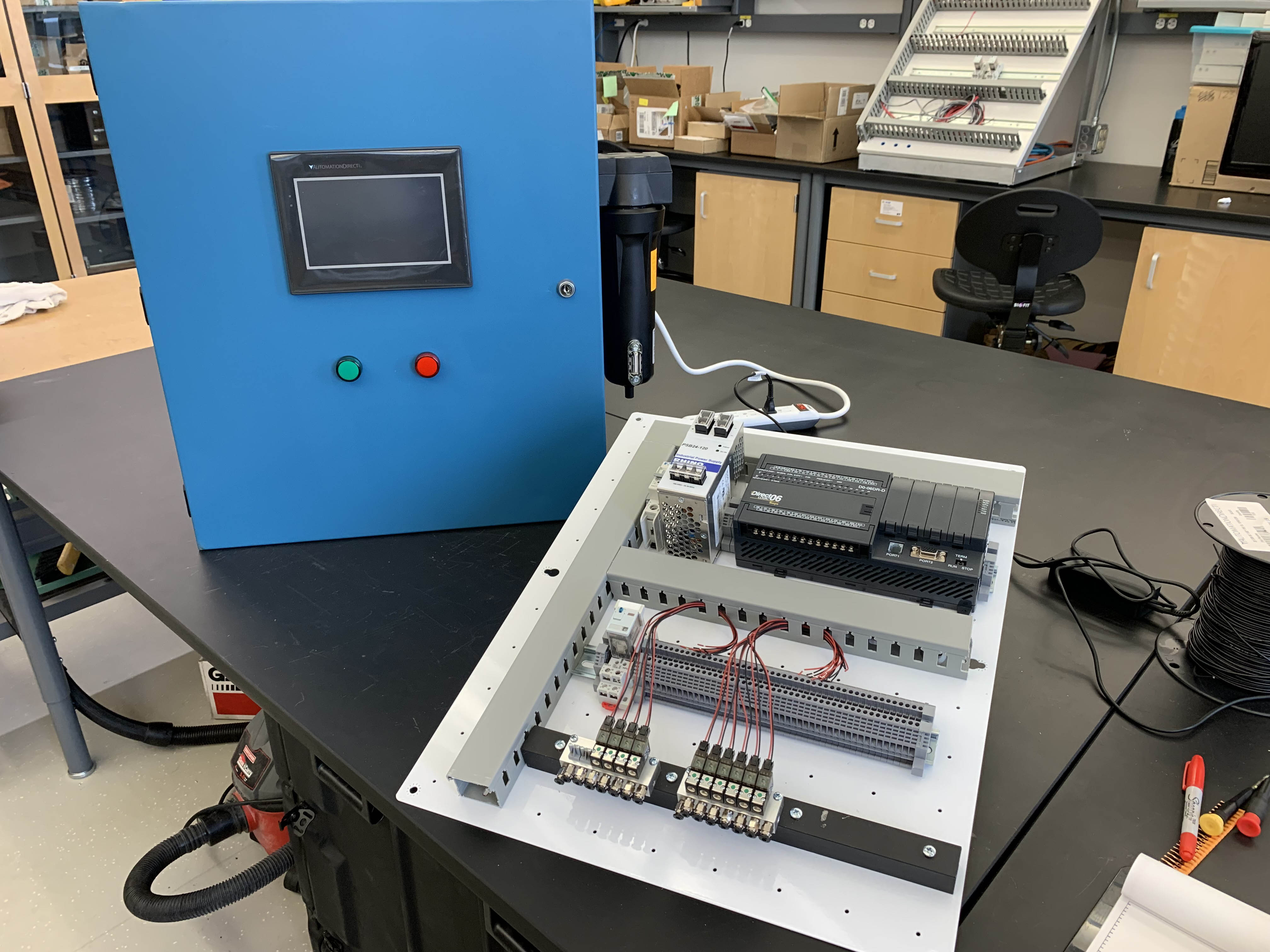New bulk fuel management technology wins innovation award

A bulk fuel tank farm in Kongiganak, a community on Alaska's Yukon-Kuskokwim Delta.
A fuel inventory system being developed by the Alaska Center for Energy and Power recently won an innovation award and could win the support and praise of remote Alaska communities.
ACEP’s Rob Bensin and Bill Thomson recently won Best Overall at the 2022 Innovative Disclosures and Entrepreneurial Activities Awards for their Fuel Inventory Management System. The Alaska Center for Innovation, Commercialization, and Entrepreneurship’s awards recognize entrepreneurial individuals who have developed innovative approaches in research, teaching or service.
"UAF innovations developed in the research lab can translate into significant real-world benefit for the wider community,” said Mark Billingsley, director of UAF’s Center for Innovation, Commercialization, and Entrepreneurship. “This fuel inventory management system, for example, has the potential to solve an energy inventory problem that can have dire consequences in remote Alaska communities."
The fuel inventory system will allow fuel and utility managers to know how much fuel is stored in their tanks without the need to physically measure. This could provide in-depth information on community fuel storage for the bulk fuel industry.
Monitoring the levels and contents of bulk fuel tanks is important across various applications. For example, in the field of fuel tanks, a typical fuel farm can have on the order of 10 or 20 tanks. A typical system for monitoring a few tanks costs tens of thousands of dollars. The major costs are associated with the sensors. Sensor cost is even higher for taller tanks.
The sensors commonly used in bulk fuel tanks are of a magnetostrictive design using multiple floats, which can also detect water and fuel density. Usually, not all tanks are monitored, due to the cost of sensors and their installation. With lack of reliable level sensing, tank dipping by hand is often done to verify inventory.
FIMS eliminates the high cost of sensors and field installations by using pneumatics and poly tubing for pressure sensing fuel levels in multiple tanks. The system can be scaled for a few tanks or very large tank farms. Using air pressure rather than mechanical sensors allows for more accurate readings and less chance of failure.

The Fuel Inventory Management System prototype control panel is currently under development.
“FIMS offers a remote monitoring option so local fuel providers don’t need to manually stick tanks and can be immediately alerted to a spill,” said Bensin. “Undetected fuel spills are typical in aging tanks and can go undetected for long periods of time and cost millions of dollars for cleanup.”
Thomson and Bensin are working with UAF’s Alaska Center ICE, and a patent is currently pending at the U.S. Patent and Trademark Office. The fuel monitoring system, which is designed to detect changes in fuel levels and the amount of water in the fuel tank on a granular level, also offers a way to remotely monitor fuel tanks and to alert utilities of leaks, theft, overfill and water levels — useful for rural utilities in Alaska and other international markets.
Funding for the system is provided by the Denali Commission and the Office of Naval Research. Development is supported by ACEP, Alaska Microgrid Group and Alaska Center ICE.
For more information, please contact Rob Bensin at rbensin@alaska.edu.


